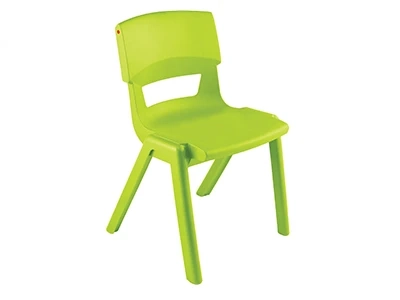The design and quality of school chairs may not be the first thing that comes to mind when we think about factors that contribute to effective learning. However, extensive research and educational experiences have shown that the right seating can have a significant impact on students' learning outcomes. This article explores the reasons why good school chairs are crucial for promoting a conducive learning environment and how they can enhance student performance, engagement, and well-being.
Ergonomics and Comfort
First and foremost, ergonomics plays a vital role in the effectiveness of school furniture. Ergonomically designed chairs that support proper posture can significantly reduce physical discomfort and the risk of developing musculoskeletal disorders among students. When students are comfortable, they are less likely to be distracted by discomfort, allowing them to focus better on their lessons. Proper posture facilitated by well-designed chairs also promotes better breathing and circulation, which can enhance cognitive function and endurance through longer periods of concentration.
Engagement and Participation
The layout and mobility of school chairs can greatly influence student engagement and participation in the classroom. Chairs that are easily movable allow for flexible classroom setups, facilitating group work, discussions, and collaborative learning activities. This flexibility not only supports a variety of teaching methods but also encourages active participation from students. Being able to easily transition from a traditional lecture setup to a collaborative group arrangement can make lessons more dynamic and engaging, catering to different learning styles and preferences.
Inclusivity and Accessibility
Good school chairs are inclusive, accommodating students of all sizes and abilities. Adjustable chairs, for instance, ensure that every student can find a comfortable and supportive seating position, regardless of their height or physical needs. This inclusivity promotes equality in the learning environment, ensuring that all students have the same opportunities to succeed. Furthermore, considering the needs of students with disabilities when selecting school chairs is crucial for creating an accessible learning environment that supports the participation and engagement of all students.
Psychological Impact
The quality and aesthetics of school chairs can also have a psychological impact on students. Classrooms that are equipped with new, well-maintained, and aesthetically pleasing chairs can create a more positive learning atmosphere. This not only reflects the school's commitment to providing the best possible environment for its students but can also boost students' morale and motivation to learn. A well-designed classroom that takes into account the comfort and needs of its occupants communicates to students that their well-being and success are valued.
Learning Outcomes
Ultimately, the impact of good school chairs on learning outcomes is evidenced by improved student performance and satisfaction. When physical discomfort is minimised, and students feel valued and supported in their learning environment, they are more likely to attend school regularly, participate actively in class, and achieve higher academic results. Additionally, the flexibility provided by good seating arrangements can enhance critical thinking and problem-solving skills as students engage in various learning activities that require collaboration and communication.
Summing up, investing in good school chairs is an investment in students' health, engagement, and academic success. By prioritising ergonomics, flexibility, inclusivity, and aesthetics in school furniture, educational institutions can create environments that are conducive to learning and development. The right seating can significantly impact learning outcomes, underscoring the importance of considering all aspects of the learning environment in fostering educational excellence.


